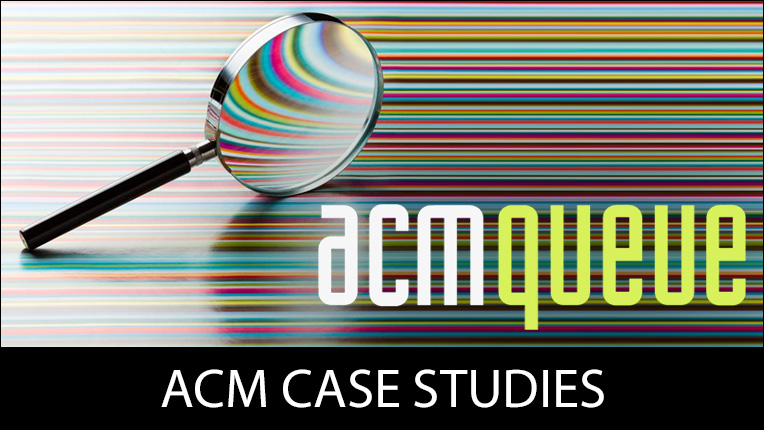RESPONSIBILITIES OF CHAPTER OFFICERS
ACM chapters are charged with meeting the needs of their members, members of the Association, and members of the larger community in which they operate. ACM chapters are responsible for maintaining the frequency and quality of activity in the area they serve, and for identifying and promoting those activities of specific interest to their members.
ACM chapters also have responsibilities to the Association. ACM chapters must communicate with the Association; submit annual financial and activity reports; report changes in officers and contact information; and adhere to ACM policies concerning chapter membership, meeting sponsorship, and management of funds.
Responsibilities of Chapter Officers
Most chapters have an executive council, which includes elected chapter officers, the past Chairperson and, in many cases, the chairpersons of the standing committees. The chapter's executive council is generally responsible for managing the chapter's affairs (with the exception of electing officers and amending bylaws). It is essential for the executive council to be open to the suggestions and feedback of the chapter membership, and should always be open to offers of help.
Upon assuming the office, all chapter officers should contact ACM Local Activities Coordinator to introduce him/herself, review chapter bylaws and policies and procedures, and review the events of the past year with his/her predecessors.
The Chapter Chair
The chapter Chairperson has the overall responsibility for developing chapter programs, for ensuring that plans and assignments are carried out, and for seeing that the chapter fulfills its obligations to the Association. The Chairperson should be familiar with the policies and procedures of the Association, with the chapter's bylaws, and with the duties of all the other chapter officers and committee chairpersons.
The newly-elected Chairperson should schedule an executive committee meeting which includes the outgoing officers as well. At that time, the Chairperson may want to schedule executive council meetings for the entire year. Keep in mind the advantages of scheduling the meeting at the same time each month.
Before getting too far along in the chapter's year, the Chairperson should do the following: appoint or establish nominating committee according to bylaws for next year's elections; communicate activities of the chapter to the local membership (many chapter chairpersons write a column in the chapter newsletter); set audit procedures in motion at year end for financial records turnover; and plan a budget with the chapter Treasurer, to be reviewed and approved by the entire executive council.
If the chapter's area includes other local ACM groups, the Chairperson should contact the appropriate chairpersons and suggest a meeting. At the meeting, the chairpersons should discuss the possibilities for cooperative efforts, such as joint meetings, reciprocal advertising agreements, the sharing of membership lists, and planning of lecture tours. They should also discuss meeting times to ensure that one group's meetings do not conflict with meetings of other ACM chapters in the area.
One of the most important duties of the chapter Chairperson is finding enthusiastic and qualified members to serve as committee chairpersons. The Chairperson should strive to bring new people into the committee structure to provide training for future chapter leaders. The job of chapter chairperson will be much more enjoyable and (much less exhausting) once responsible and reliable volunteers are found to take on various duties. It is strongly recommended that the chapter chairperson take the time at general meetings to acknowledge those chapter volunteers whose help has been valuable. This positive feedback and public recognition of good works is often just the encouragement an active volunteer needs to commit to a longer-term leadership position in the chapter in future years
The Chapter Vice Chair
The chapter Vice Chairperson should be prepared to assume the office of Chairperson or temporarily act in that position at any time. The Vice Chairperson should be familiar with the duties and responsibilities of the Chairperson, and of the other elected officers and committee chairpersons.
The Vice Chairperson can be an integral component of the chapter's operation. In most cases, the Vice Chairperson is responsible for overseeing the activities and progress of the various committee and chapter programs.
The Chapter Treasurer
(This position may be combined with the chapter secretary's responsibilities)
The chapter's financial management and operation are of great importance to the Association. The chapter Treasurer is responsible for the fiscal operation and reporting of the chapter, and of all committees and programs established by the chapter.
Upon assuming office, it is recommended that the Treasurer notify banks of signature change on accounts and verify that the ACM Chief Operating Officer has signature authority on all bank accounts.
The ongoing responsibilities of the chapter treasurer include:
- Maintaining all chapter financial records and chapter checkbook;
- Collecting money at meetings if applicable;
- Filing mandatory annual financial report with headquarters;
- Supplying appropriate budget report to the executive board of the chapter;
- Reporting financial status to chapter;
- Coordinating membership procedure and fee with membership chairperson.
The Chapter Secretary
(This position may be combined with the chapter treasurer's responsibilities)
The ongoing responsibilities of the Chapter Secretary include:
- Informing ACM Headquarters of the names and contact information of new officers and providing headquarters with updated membership lists;
- Sending agenda to board members for executive board meetings and recording the minutes of such meetings;
- Handling all chapter correspondence on a timely basis;
- Maintaining chapter files for historical purposes;
- Corresponding with headquarters regarding changes to the chapter's bylaws.
Additional Positions may include the following: (These positions are not required by ACM)
The Chapter Membership Chairperson
The Membership Chairperson is responsible for:
- Coordinating membership procedures and fee with Treasurer;
- Recruiting new members to ACM and contacting headquarters for promotional materials;
- Maintaining chapter membership records and database, including member name, email, phone, fax number, address, company, dues payment, and ACM membership number;
- Establishing a membership campaign, especially at renewal time; and
- Working to set up corporate membership and institutional sponsorship programs when possible; and communicating with the Local Activities Coordinator about renewal trends.
The Faculty Sponsor
The Sponsor shall be a faculty member or full-time staff member of your school. Each Student Chapter has one Sponsor.
The Student Chapter Sponsor shall be generally responsible for the activities of the Chapter. Specifically, the Sponsor helps provide continuity from year to year as student leadership and personnel change; promotes good student-faculty relationships; helps maintain university standards in all activities of the Chapter; exercises financial supervision, if necessary, by promoting prompt payment of bills and collection of dues, and overseeing the settlement of all accounts in the event of dissolution of the Chapter.
Lifelong Learning
ACM offers lifelong learning resources including online books and courses from Skillsoft, TechTalks on the hottest topics in computing and IT, and more.

ACM Case Studies
Written by leading domain experts for software engineers, ACM Case Studies provide an in-depth look at how software teams overcome specific challenges by implementing new technologies, adopting new practices, or a combination of both. Often through first-hand accounts, these pieces explore what the challenges were, the tools and techniques that were used to combat them, and the solution that was achieved.

